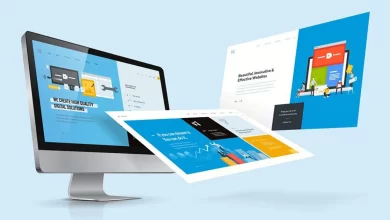Mockups – A strategic approach towards Web Design and Development

The search engines are flooded with high-quality websites, and it takes a lot of struggle and hardshipsto make your website eye-catching for a perfect user experience. The most unnerving task is deciding and working on a website development plan. You get hundreds of ideas for computing one single website, and this is the point where we can understand the starring role of a samplewebsite design. When you have your sample ready, you get a clear vision of how your website design will look when it’s live.
Website mockup is the technical term that is particularly used for the sample website design. It is a visual representation of a website’s general appearance and navigation that intends to demonstrate the colour scheme, icons, fonts, images, graphics, and content layout. A striking web design is imperative to fascinate the audience, and also quality content is necessary too!
Creating a website mockup is the first stage where your website begins to form. A mockup plan is essential because when you come to see the resemblance of your final product most of the time, you realize to make specific changes that can make it stimulus.
This was a brief about mockups of a Website Design. More to know, the mockups only depict the appearance but not the website’s functionality. It is devoid of moving elements like animations, pop-ups, sliders, or clickable buttons.
As we now have a brief idea about website mockups, let’s gaze at the procedure mentioned below:
-
Visual setup for optimal functioning
It is crucial to study the functionality of your website and its operation. Here, mockups help you decide the best way to create an implementation of website elements for optimal functionality.
These are some points that you can take care of with the help of mockups-
1) Creating a wireframe – For framing a full-fledged website, a wireframe plays the first turn. Mockup tools help you design the website’s general structure and then embed your text, files, links and graphics, etc.
2) Fonts/Typography–Make your visual design appealing with proper font style, size, and placement. The text should not be too heavy and monotonous; so, frame the stanzas accordingly.
3) Content layout – Your website needs to hold a perfect content layout. Some good examples are the F- pattern and the Z-pattern structure.
4) Negative space – The negative space is also referred to as white space. Ensure that there is a perfect balance between content and space to avoid a cluttered or a bare webpage.
5) Colour scheme – Selecting a befitting colour scheme is vital to fascinate users. The suitable theme makes the website more alluring.
One important thing!
The colour scheme should be complementary to your business type. e.g. for developing a candy business website, it can be multicoloured with a lot of vibrancy.
6) Navigation setup – Mockups help to demonstrate the navigation tools in the website’s interface. Easier the navigation, More the conversion!
-
Fetch feedback and redesign if required
Designing a flawless website can be challenging if you are new to website design. Your website design should pass the mockup phase. Once your mockup is ready, you need to test it and gather feedback from your co-workers and clients.
Your clients should know that this is just a proposed draft that can be altered as per the client’s recommendations. If things need to be tweaked, you can make desired changes before a final launch.
-
Convert the mockup to prototype
Once you have fixed the errors and made all the obligatory changes and It’s a YES from your clients and team, the next step is to convert your mockup into a prototype that is an interactive layout of the website. Though it is not fully functional, it can give you a relatively real experience.
The prototype formation depends on the type of tool you use for your design or using a separate platform.
You cannot hand over the design to the developer until you’re confident that it is pretty effective and suitable for the business type.
Various tools help you design website mockups. The whole process of mockup formation is reliable on the software tools. The selection of tools depends on different factors like budget, preferences, reliability of wireframes, mockups and prototypes and your desire to use specific software.
Some prominently used tools are Adobe XD, Adobe Illustrator, Sketch, Adobe Photoshop, and InVision Studio.
Following a suitable process from brainstorming to the final prototype is a key consideration. If your basics of web design are not clear, you’ll not be able to extract the efficiency.
Once your goal is clear and everything is on point, nothing can stop your design from gleaming.
After reading the details mentioned above, we have a broad vision of Website design.
Do you know what the best part of mockup creation is?
It saves you a lot of –
- Time – It will save you enough time because you have already created a sample masterpiece. So, you won’t have to make any changes from scratch.
- Effort – Coding a site design can be a time-consuming and arduous task. If you communicate and work on mockups before your site design is coded, you’ll save a lot of time and effort.
- Money– Web design and development is not a game of pennies. It has a handsome budget. Creating the mockups and prototypes does not let you miss any critical factor of web design to save the additional expenditure.
So, the sum up says…
There is a high degree of uncertainty when it comes to initiating a website. Therefore, in web design, a mockup is helpful because it aids in the improvement of a website’s aesthetic concerning overall performance and content value. It comes after wireframing and prototyping, or it can be integrated with both, depending on the website’s goal.
You’ll develop effective techniques to enhance site content positioning test your designs and layouts. Also, you will save spending money, time and effort on later revisions.
Also Read: https://www.articlevibe.com/what-can-do-a-web-design-company-help-your-business/






